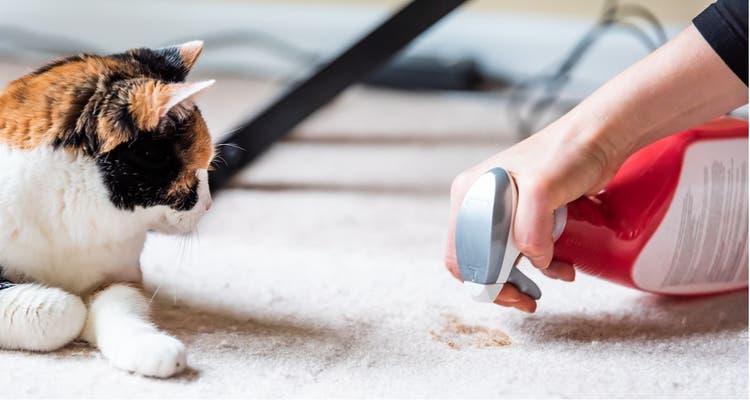
Feline Hacks: Dealing with Cat Hairballs
If you have a long-haired feline (or really any feline that’s not bald), you’re probably familiar with cat hairballs. While it’s definitely not the most endearing thing about your feline friend, knowing how to deal with the issue can significantly help you out in the long run.
When your cat has a hairball, it can be a little overwhelming because you might think there’s something more serious going on. Being able to recognize the signs can allow you to better help your cat while they work through the issue.
Cats groom themselves often by licking their fur, and this is mainly where the problem starts. If you’ve ever felt your cat’s tongue, it’s a little rough. This is because there are backwards facing barbs on your cat’s tongue that help them groom. These barbs catch stray hairs, but because the barbs face backwards, they don’t allow anything that enters your cat’s mouth to go anywhere but down.
Ingesting the hairs is what causes cat hairballs, or trichobezoar, to develop. All the hair that your cat’s tongue picks up will form a mat or a ball within their digestive system. Shorthairs can suffer from cat hairballs too, the issue is just much less frequent because there is less fur for them to ingest. This is all a normal process that cats go through, and typically your cat will be able to pass the hairball without having an issue.
Unfortunately, as many cat owners who have come home to a hairball on their floor know, this isn’t always true. Every so often, the hairball can cause an issue by blocking parts of your cat’s stomach or digestive tract. The blockage can often cause gastrointestinal distress if it ends up blocking the pathway for food to enter the stomach. As it works its way through your cat’s system, it can also be a cause of constipation.
Once this starts to happen, your cat may exhibit some of the obvious signs of a hairball like vomiting or regurgitation.
Cat Hairballs — What to Watch For
When your cat brings up a hairball, you might hear a sound like a dry cough, or as if your cat has something stuck in the back of their throat. It also may be preceded by fluid or food. Your cat might also experience constipation while their body is dealing with the hairball.
There are several things you can do to help your cat when they have a hairball. From preventing it to helping them pass it, cat hairballs can be a much less stressful experience if you know what you’re dealing with.
The first and most important thing you can do is groom your cat. Frequent grooming is the best way to prevent cat hairballs, because you’ll be doing most of the work and your cat will be ingesting fewer stray hairs. The more hair your cat has, the more grooming you’re going to have to do. It’s not out of the question to groom your cat once a day in order to keep them from developing hairballs. A daily brushing is also good to keep your cat’s skin healthy and free of any tangles or mats that have developed in their fur.
There are also specific products designed to help cats pass hairballs. These work as both a laxative and a lubricant to help your cat pass hairballs easily and quickly. They’re made to have a pleasant taste, so your cat won’t be resistant to eating it, and they often come in a paste form. You can feed it to your cat directly, or apply it to their paws to encourage them to lick it off.
Many pet food brands also offer specific types that provide protection against hairballs. Typically, these foods have a high fiber content in order to help your cat pass any hairballs they might be dealing with.
Hairball remedy treats are another way to help your cat pass hairballs. These treats contain mineral oil that works to break up the hairballs in order to prevent blockages. Each of these products are mainly designed for cats who deal with hairballs frequently and need some outside assistance to prevent further problems.
You should have a discussion with your veterinarian to determine if any of these are right for your cat. You should also understand that every cat is different and while one product might work wonders on one cat, it might not make a difference to another. Your veterinarian will be able to help you figure out what the best course of action is.
One last thing to note is that vomiting a hairball shouldn’t be a common occurrence. If your cat is frequently throwing up hairballs, it could be a sign of a deeper issue. Always check with your veterinarian if a problem like this persists.